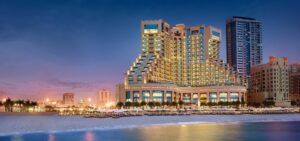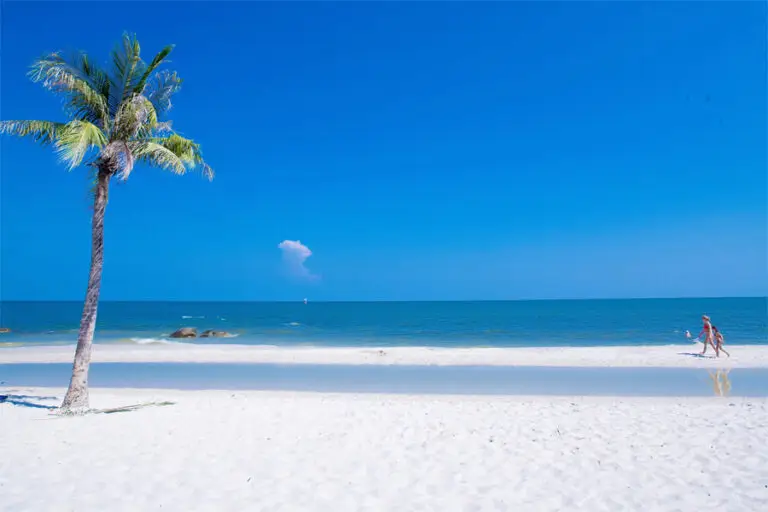PREFER TO WAtch this article as a video ?
Palawan, Philippines: A Traveler’s Paradise
Palawan, often referred to as the “Last Frontier” of the Philippines, is an archipelagic province known for its pristine beaches, crystal-clear waters, and diverse marine life. It’s a haven for nature lovers, adventure seekers, and those looking to escape the hustle and bustle of city life.

1. Overview:
Palawan, dubbed the “Last Frontier” of the Philippines, stands as a testament to nature’s grandeur. This archipelagic province, nestled in the western part of the country, boasts an array of pristine beaches that stretch for miles, kissed by azure waters that shimmer under the tropical sun. But beyond its beaches, Palawan’s underwater world is a spectacle in itself. Home to vibrant coral reefs, it teems with a myriad of marine species, making it a diving paradise for enthusiasts from around the globe.
The islands of Palawan are not just about natural beauty; they are steeped in history and culture. Ancient caves with intricate limestone formations tell tales of civilizations past, while indigenous communities, such as the Palaw’an and the Tagbanua, continue to practice age-old traditions, offering a glimpse into the province’s rich heritage.
For the adventure seekers, Palawan is a playground. From trekking through dense jungles and scaling limestone cliffs to exploring hidden lagoons and navigating subterranean rivers, the range of activities is boundless. And for those who yearn for tranquility, the serene landscapes, punctuated by the gentle hum of nature, provide the perfect backdrop for relaxation and introspection.
2. Top Attractions:
Puerto Princesa Underground River:
Designated as a UNESCO World Heritage Site, the Puerto Princesa Underground River is one of the world’s longest navigable underground rivers. As you embark on a boat tour, you’ll be captivated by the awe-inspiring limestone formations that adorn the cave’s ceilings and walls. Stalactites and stalagmites, shaped over millennia, create natural artworks that leave visitors spellbound. The river’s unique ecosystem, home to various species of fish and bats, adds to the mystical experience. The echoing sounds of dripping water and the serene ambiance make this journey truly unforgettable.
El Nido, often described as a slice of paradise, is a mosaic of limestone cliffs, secret lagoons, and emerald waters. The Bacuit Archipelago, with its jagged karst formations, provides a dramatic backdrop to the crystal-clear waters below. Island hopping tours take visitors to hidden beaches and enchanting lagoons, each with its own charm. Dive sites around El Nido teem with marine life, offering divers a chance to swim alongside turtles, colorful fishes, and even reef sharks. As the sun sets, the sky paints a canvas of hues, making El Nido a picture-perfect destination.
Coron, a treasure trove for divers, is renowned for its sunken Japanese warships from World War II. These historic wrecks, now adorned with corals, have become thriving marine habitats. But Coron’s allure doesn’t end underwater. On land, the Kayangan Lake, often dubbed the cleanest lake in Asia, offers pristine waters surrounded by towering limestone cliffs. Maquinit Hot Springs, with its therapeutic warm waters, is a haven for relaxation. For a panoramic view of the islands, a trek to Mt. Tapyas is a must, where the vista of the sun setting over the Sulu Sea is simply mesmerizing.
Tubbataha Reefs Natural Park:
Located in the heart of the Sulu Sea, the Tubbataha Reefs Natural Park is a marine sanctuary like no other. Another gem on UNESCO’s World Heritage list, this atoll reef is a haven for over 600 species of fish, 360 species of corals, and various species of sharks and dolphins. Divers from around the world flock to Tubbataha to experience its underwater wonders. From vast coral gardens to vertical walls dropping into the deep abyss, the dive sites here are both diverse and breathtaking. The park’s commitment to conservation ensures that this underwater paradise remains pristine for generations to come.
3. Activities:
Island Hopping:
Palawan’s archipelago is a treasure trove of hidden gems waiting to be discovered. Embark on an island-hopping adventure to uncover secluded beaches, crystal-clear lagoons, and mesmerizing underwater caves. In El Nido, the Big and Small Lagoons offer tranquil waters surrounded by towering limestone cliffs, making it perfect for kayaking or simply floating in its serene embrace. Coron’s Twin Lagoons are a testament to nature’s beauty, with their mix of fresh and saltwater providing a unique swimming experience. Each island has its own story, its own charm, and its own set of wonders to offer.
Diving and Snorkeling:
The underwater world of Palawan is as enchanting as its landscapes. Dive into its depths to witness vibrant coral gardens teeming with marine life. Schools of colorful fish, graceful sea turtles, and majestic manta rays are just some of the marine inhabitants you might encounter. The sunken WWII shipwrecks in Coron offer a historical dive experience, where history and marine life intertwine. For those who prefer staying closer to the surface, snorkeling provides a window into this aquatic wonderland, with the shimmering waters offering clear views of the world below.
Trekking:
For those who seek adventure on land, Palawan’s diverse terrains provide ample trekking opportunities. One of the most rewarding hikes is up Mt. Tapyas in Coron. As you ascend its 700+ steps, you’ll be greeted with sweeping views of the town, the sparkling sea, and the neighboring islands. The summit, adorned with a giant cross, is a popular spot to catch the sunrise or sunset, with the sky painting a kaleidoscope of colors.
Cultural Experience:
Palawan is not just about natural beauty; it’s a melting pot of cultures and traditions. A visit to the Batak Tribe in Puerto Princesa offers a deep dive into the indigenous way of life. The Batak, one of the oldest indigenous groups in the Philippines, live in harmony with nature. Engage with the community, participate in their traditional dances, and learn about their customs and beliefs. This cultural immersion provides a unique perspective, showcasing the rich tapestry of Palawan’s heritage.
4. Culinary Delights:
Palawan, with its rich marine resources and diverse cultural influences, boasts a culinary scene that’s both unique and flavorful. The province offers a delightful gastronomic journey that reflects its natural abundance and heritage.
Tamilok:
Often referred to as the “woodworm” or “shipworm,” Tamilok is not a worm but a type of mollusk that thrives in mangrove wood. It might challenge the palate of the uninitiated, but it’s a must-try for the adventurous foodie. Served raw and marinated in vinegar, lime, and chili, its slimy texture and tangy flavor are reminiscent of oysters. Tamilok is not just a delicacy but also a testament to Palawan’s rich mangrove ecosystem.
Fresh Seafood:
Being an archipelago, Palawan is a haven for seafood lovers. From the daily catches of fish, crabs, and prawns to the more exotic sea urchins and sea snails, the variety is endless. Grilled fish, often marinated in local spices and herbs, is a staple. “Kinilaw,” a Filipino version of ceviche, made with raw fish cured in vinegar and mixed with onions, ginger, and chili, is a refreshing treat. Lobsters, crabs, and squids, whether grilled, stewed, or fried, showcase the freshness of the sea.
Crocodile Sisig:
For those looking to try something truly unique, Palawan offers dishes made from farm-raised crocodiles. Crocodile sisig, a sizzling dish made from minced crocodile meat seasoned with spices and served on a hot plate, is both tasty and tender. It’s a sustainable and healthier alternative to pork, being low in fat and high in protein.
Nido Soup:
Named after El Nido, this delicacy is made from the nests of swiftlets. These edible nests, made from the bird’s saliva, are the main ingredient in this luxurious and nutritious soup. It’s a testament to the harmony between Palawan’s natural resources and its culinary traditions.
When in Palawan, dining is not just about satiating hunger; it’s an experience that tells the story of the land, the sea, and the people. Each dish, with its flavors and textures, offers a glimpse into the heart of this beautiful province.
5. TRAVEL TIPS:
Best Time to Visit:
Palawan’s tropical climate means it experiences both wet and dry seasons. The dry season, which spans from November to May, is the ideal time for tourists. During these months, the skies are clear, the seas are calm, and outdoor activities are more enjoyable. However, it’s also the peak tourist season, so expect popular spots to be more crowded. If you’re looking for a quieter experience, consider visiting during the shoulder months of November and May.
Language and Communication:
While Filipino is the national language, English is widely spoken, especially in tourist areas. This makes it convenient for international travelers to communicate, ask for directions, or learn more about local culture and history. However, learning a few basic Filipino phrases can enhance your travel experience and is always appreciated by the locals.
Environmental Respect:
Palawan is known for its pristine natural beauty, and preserving it is a collective responsibility. When visiting protected areas, marine sanctuaries, or even local beaches, always adhere to local guidelines. This includes not touching or stepping on corals, not feeding marine animals, and disposing of trash properly. Using reef-safe sunscreens and reducing single-use plastics can also make a significant difference.
Weather Precautions:
While island-hopping is one of Palawan’s main attractions, the weather can be unpredictable, especially during the rainy season. Always check the local weather forecast before setting out on any sea adventures. It’s essential to prioritize safety, and local tour operators will often cancel trips if the weather conditions are deemed unsafe.
Local Etiquette:
Filipinos are known for their hospitality and friendliness. When interacting with locals, a smile goes a long way. Respect local customs and traditions, especially when visiting indigenous communities. A simple gesture, like asking for permission before taking photos, can make your interactions more meaningful and respectful.
Currency and Payments:
While major establishments in Palawan accept credit cards, it’s advisable to carry some Philippine Pesos (PHP) for smaller transactions, especially in remote areas. ATMs are available in major towns, but it’s best to have cash on hand when traveling to off-the-beaten-path destinations.
6. Nearby Destinations:
1. Sabah, Malaysia:
Just south of Palawan, across the Sulu Sea, lies the Malaysian state of Sabah on the island of Borneo. Known for its diverse wildlife, rainforests, and the majestic Mount Kinabalu, Sabah offers a unique blend of nature and culture. Dive sites like Sipadan are world-renowned, and the orangutan rehabilitation centers in Sepilok are a must-visit for wildlife enthusiasts.
2. Brunei:
This tiny sultanate on the island of Borneo is rich in history and culture. With its grand mosques, the opulent Royal Regalia Museum, and the water villages, Brunei offers a different kind of charm. It’s a short flight from Palawan and provides a unique blend of Malay culture with a touch of luxury.
3. Sulu Archipelago, Philippines:
Located to the southwest of Palawan, the Sulu Archipelago is a chain of islands that boasts stunning marine biodiversity. While some areas might require caution due to security concerns, the natural beauty of the region is undeniable.
4. Mindoro, Philippines:
Directly north of Palawan, Mindoro is known for its beautiful beaches, especially White Beach in Puerto Galera. The island also offers trekking opportunities, with the chance to meet the indigenous Mangyan people and explore the Tamaraw Falls.
5. Cuyo Islands, Philippines:
Situated between Palawan and Panay, the Cuyo Archipelago is a lesser-known gem. These islands are perfect for those looking to experience the Philippines off the beaten path. With its laid-back vibe, clear waters, and historical sites, Cuyo is an ideal destination for relaxation and exploration.
6. Spratly Islands:
While the Spratly Islands are a point of contention among several Southeast Asian nations, their remote location and untouched coral reefs make them a diver’s dream. However, visiting requires careful planning and awareness of the geopolitical situation.
7. Kalimantan, Indonesia:
The Indonesian portion of Borneo, Kalimantan, is a treasure trove of biodiversity. From the dense rainforests and orangutan sanctuaries to the Dayak tribes and their traditional longhouses, Kalimantan offers a deep dive into Borneo’s heart.
Each of these destinations offers a unique experience, whether it’s diving into crystal-clear waters, trekking through lush rainforests, or immersing oneself in local cultures. While Palawan is a destination in its own right, its proximity to these places makes it a perfect starting point for broader Southeast Asian adventures.
7. Safety:
1. Travel Advisories: Before planning your trip, it’s always a good idea to check travel advisories from your home country’s embassy or consulate. While most parts of Palawan are safe, it’s essential to be updated on any recent developments or concerns.
2. Health Precautions: Protect yourself from mosquito-borne diseases like dengue and malaria by using insect repellent and wearing long-sleeved clothing, especially during the early morning and evening hours. It’s also advisable to drink bottled water and avoid consuming raw or undercooked food.
3. Water Activities: Palawan is renowned for its marine adventures. When participating in water activities like diving, snorkeling, or island hopping, ensure that you’re with a reputable tour operator. Always wear life jackets and be cautious of strong currents.
4. Local Wildlife: While the island’s fauna is a part of its charm, it’s essential to maintain a safe distance from wild animals and avoid feeding them. This includes monkeys, monitor lizards, and marine creatures.
5. Respect Local Customs: Filipinos are known for their warmth and hospitality. When visiting indigenous communities or sacred sites, be respectful of local customs and traditions. Asking for permission before taking photos and dressing modestly can go a long way in building rapport with the locals.
6. Transportation: When traveling within Palawan, it’s best to use registered transportation services. If renting a motorbike or scooter, ensure it’s in good condition and always wear a helmet.
7. Night Safety: While Palawan’s nightlife is relatively laid-back, it’s advisable to avoid poorly lit areas and always inform someone of your whereabouts. Stick to well-trodden paths and avoid beach areas late at night.
8. Petty Crimes: Like any tourist destination, there’s a risk of petty crimes like pickpocketing, especially in crowded areas. Keep your belongings secure, avoid displaying expensive jewelry, and be cautious when using ATMs.
9. Emergency Contacts: It’s a good practice to have a list of emergency contacts, including local police, medical facilities, and your country’s embassy or consulate.
Conclusion:
In the heart of Southeast Asia lies Palawan, a gem that encapsulates the essence of tropical paradise. From its azure waters and breathtaking landscapes to its rich culture and delectable cuisine, Palawan offers an experience that resonates with every traveler’s soul.
While it promises adventure and serenity in equal measure, it’s paramount to tread with awareness and respect, ensuring not only one’s safety but also the preservation of this pristine haven.
As with any journey, the magic lies in the memories created, and Palawan, with its unique blend of nature and culture, is sure to etch unforgettable moments in the heart of every visitor.
Whether you’re a seasoned traveler or a first-time explorer, Palawan beckons with open arms, promising an adventure of a lifetime. So pack your bags, set your spirit free, and let the “Last Frontier” of the Philippines enchant you.









